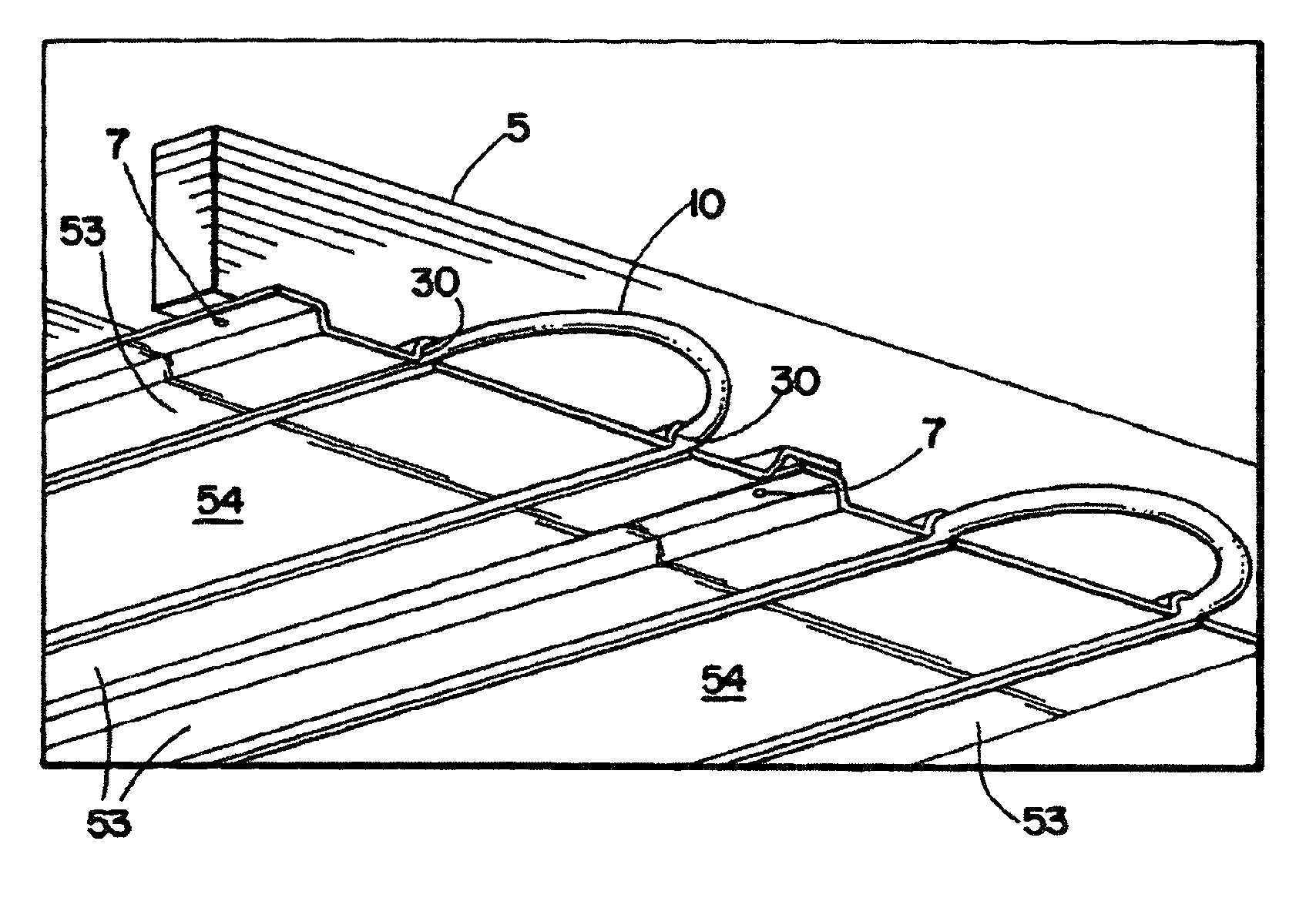Radiant heating and cooling panel
a technology of heating and cooling panel and radiator, which is applied in the direction of air heater, heating type, lighting and heating apparatus, etc., can solve the problems of increasing labor and costs, affecting the widespread adoption of consumers, and uneven heating/cooling and noise, so as to improve mechanical contact, promote efficient heat transfer, and increase sound isolation
- Summary
- Abstract
- Description
- Claims
- Application Information
AI Technical Summary
Benefits of technology
Problems solved by technology
Method used
Image
Examples
Embodiment Construction
[0033]For the following detailed description and claims, the term “living space” shall refer to the area in a home or building in which the occupants are commonly found.
[0034]The applicant discloses a radiant plate comprising a portion offset from the joists or studs to which it is attached. A channel is disclosed within the offset space through which the hydronic tube is positioned.
[0035]Referring now to FIG. 1, an installer 1 is depicted in a living space easily threading a hydronic tube 10 into a channel 30. In this case the hydronic tube in use is Hydronic Alternatives ½″ PEOC-PLUS PE-RT 5-layered heating pipe with oxygen barrier, but any type of hydronic tubing could be installed just as easily and without departing from the spirit of the invention.
[0036]Referring now to both FIG. 1 and FIG. 2 for purposes of clarity, a series of parallel radiant plates (not numbered) is depicted, each comprising a flat center 54 and two flat edges 53. The radiant plates are better depicted in ...
PUM
 Login to View More
Login to View More Abstract
Description
Claims
Application Information
 Login to View More
Login to View More - R&D
- Intellectual Property
- Life Sciences
- Materials
- Tech Scout
- Unparalleled Data Quality
- Higher Quality Content
- 60% Fewer Hallucinations
Browse by: Latest US Patents, China's latest patents, Technical Efficacy Thesaurus, Application Domain, Technology Topic, Popular Technical Reports.
© 2025 PatSnap. All rights reserved.Legal|Privacy policy|Modern Slavery Act Transparency Statement|Sitemap|About US| Contact US: help@patsnap.com



